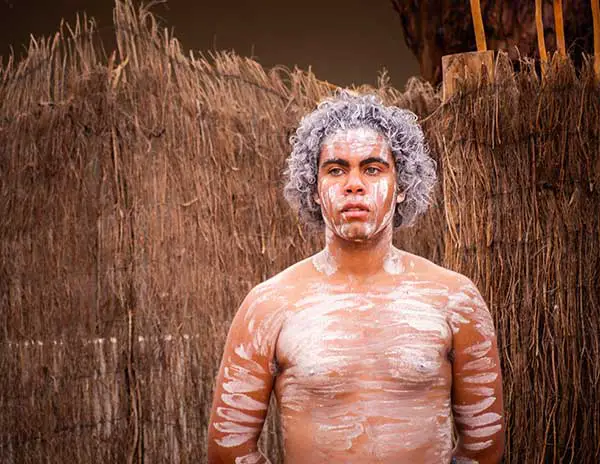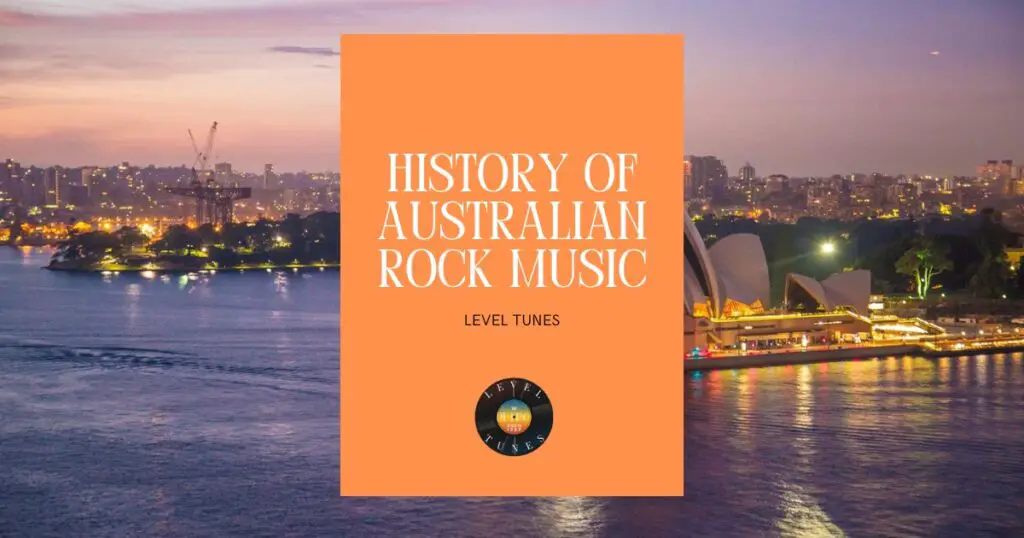Australia is a land overflowing with musical talent, and its rich history of rock music demonstrates this. For decades, Australian rock has captivated listeners worldwide, thanks to the country’s unique blend of Indigenous and Western styles.
From the early influences of British and American legends like The Beatles and The Rolling Stones to home-grown icons such as AC/DC and Midnight Oil, Australian rock music has seen significant moments that have shaped our global appreciation for the genre.
Key Takeaways
- Australian rock music has its roots in British and American influences, with local bands like Billy Thorpe & The Aztecs and Johnny O’Keefe paving the way during the 1950s and 1960s.
- The golden age of Australian rock occurred during the 1970s, with iconic bands like AC/DC taking center stage and pub rock culture playing a significant role in shaping the genre’s sound.
- Contemporary Australian rock music continues to evolve, with new acts and subgenres emerging in genres such as indie rock and electronic dance music. Digital platforms have also had a significant impact on how artists distribute their work and connect with audiences.

The Roots Of Australian Rock Music
Australian rock music had its roots in the influences from British and American music, with local Australian bands like Billy Thorpe & The Aztecs and Johnny O’Keefe paving the way in the 1950s and 1960s.
Influences From British And American Music
As a music lover, I cannot help but be fascinated by the way British and American sounds have greatly influenced the development of Australian rock music. It all began in the 1960s when Australia was captivated by rock tunes emerging from Britain and the USA.
A shining example is how pop music ushered in a new era for Australian rock soundscapes. Initially drawing influences from diverse genres like jazz, ragtime, blues and African American culture’s nuances, pop became an essential component that shaped our own version of rock ‘n’ roll.
A notable band that took inspiration from both Britain and America was none other than the Bee Gees; originally hailing from England before moving to Australia as teenagers.
Local Australian Bands That Paved The Way In The 1950s And 1960s
Exploring the roots of Australian rock music reveals a rich history of local bands that shaped the genre during the 1950s and 1960s. Some of these influential musicians and groups include:
- Johnny O’Keefe: Widely regarded as Australia’s first rock and roll star, O’Keefe emerged in the late 1950s with hits such as “Wild One” and “Shout.”
- Col Joye: A pioneer of Australian music who found success in both the pop and rock scenes with chart-topping tracks like “Oh Yeah Uh Huh” and “Bye Bye Baby.”
- The Thunderbirds: One of Australia’s premier instrumental rock bands from Melbourne, who built a strong following with their energetic live performances.
- The Atlantics: This Sydney-based surf-rock group became known for their hit instrumental track “Bombora,” which showcased their signature guitar-driven sound.
- The Masters Apprentices: Formed in Adelaide, this band broke new ground in Australia with their blues-inspired rock sound, most notably with tracks like “Elevator Driver” and “Turn Up Your Radio.”
- Billy Thorpe & The Aztecs: An iconic band that transitioned from pop to hard rock, hitting it big with songs such as “Poison Ivy” and “Most People I Know (Think That I’m Crazy).”
- Normie Rowe: Dubbed ‘Australia’s King of Pop’ during the 1960s, Rowe’s versatile singing style allowed him to tackle both ballads and uptempo tracks, scoring multiple hits along the way.
These pioneering bands were essential in laying the foundation for Australian rock music to develop into what we know today – making them true legends within Australian music history.

The Golden Age Of Australian Rock Music
During the 1970s, Australian rock music hit its peak with iconic bands like The Easybeats and AC/DC taking center stage, fueled by the influence of pub rock culture.
Emergence Of Iconic Bands Such As The Easybeats And AC/DC In The 70s
The 1970s marked a pivotal time in Australian rock music history, as it saw the emergence of iconic bands that would go on to leave an indelible mark on the global music scene.
The decade began with The Easybeats, who had already tasted success in the late 60s, paving the way for other Aussie acts to follow suit.
AC/DC burst onto the scene as one of Australia’s most famous pub rock bands, formed by brothers Malcolm and Angus Young (George Young’s siblings). Their hard-rocking tunes and rebellious spirit resonated with fans all over the world, earning them a well-deserved spot among rock ‘n’ roll royalty.
Alongside AC/DC came other influential groups such as Midnight Oil and Skyhooks, who further contributed to this golden age of Australian rock music.
Influence Of Pub Rock
One of the defining characteristics of Australian rock music is its strong roots in pub rock. The genre emerged in the 1970s and was heavily influenced by blues and boogie rock, as well as a growing live music scene in pubs across Australia.
Pub rock became synonymous with the classic sound of Australian rock, featuring energetic guitar riffs, catchy choruses and raw vocals. Iconic bands such as AC/DC, Cold Chisel and Rose Tattoo cut their teeth playing to raucous crowds in local pubs before gaining national recognition.

The Evolution Of Australian Rock Music
In the 80s, new wave and punk rock had a significant impact on Australian music, while the 90s saw the rise of alternative rock and grunge with bands like Silverchair and The Superjesus.
New Wave And Punk Rock In The 80s
The 80s saw the emergence of new wave and punk rock in Australian music, which provided a refreshing change from the pub rock domination of the previous decade.
The sound was heavily influenced by British bands like Elvis Costello and Joe Jackson, as well as American artists like Talking Heads. New wave music was an umbrella term for various pop and rock styles including genres such as synthpop, progressive rock, and indie.
Meanwhile, punk rock continued to be a major influence with its raw energy and rebelliousness inspiring countless Aussie bands. The likes of Midnight Oil, INXS, Men at Work were all considered one-hit wonders during this time but still managed to have a significant impact on Australian music history.
During this era several seminal acts emerged that would go on to shape not just Australian rock music but world rock scene itself; Crowded House being one such example – their self-titled debut album in 1986 took Melbourne songwriter Neil Finn from cult favourite with his band Split Enz into international stardom performing around the world selling millions records worldwide.
Alternative Rock And Grunge In The 90s
The 1990s marked a significant evolution in the Australian rock music scene, with new sub-genres like alternative rock and grunge gaining popularity. Alternative rock became widely popular in the 90s and is considered a branch of the rock music genre.
It encompassed bands such as Silverchair, which rose to fame with their debut album “Frogstomp.” Meanwhile, grunge music was also on the rise – characterized by its distorted guitar sounds and angst-ridden lyrics.
This genre found global success through bands like Nirvana and Pearl Jam but was also embraced in Australia by groups like Tumbleweed and Spiderbait.
In addition to indie guitar rock, funk, soul, ska, jazz, reggae and hip hop were some of the other styles present in Australia’s nineties music scene.

Contemporary Australian Rock Music
Contemporary Australian rock music has seen a rise in new acts and subgenres, such as indie and electronic rock, with digital platforms playing a significant role in the industry’s evolution.
Rise Of New Acts And Subgenres In The 2000s And Beyond
As we entered the 21st century, Australian rock music experienced a renaissance with the emergence of new acts and subgenres. The internet age brought about easier access to distribution channels, resulting in greater exposure for emerging artists from all over the country.
Some notable contemporary Australian rock bands that emerged at this time include Tame Impala and King Gizzard & The Lizard Wizard. Both acts have garnered international acclaim for their unique sounds, which blend psychedelic rock with elements of electronic dance music.
The Impact Of Digital Platforms On The Australian Music Industry
As technology continues to advance, digital platforms have become increasingly dominant in the music industry. The emergence of online streaming services and social media has significantly impacted how artists and fans engage with music.
In Australia, this trend is no different.
The rise of these platforms has changed the way audiences discover and consume music in Australia. Online streaming services like Spotify and Apple Music have made it easier for independent artists to distribute their work without relying on traditional record labels.
Social media has also provided a unique opportunity for artists to connect directly with their audience. However, as more revenue from the industry continues to shift towards these digital giants, many fear that smaller artists may struggle to make a living off their craft if they are not able to keep up with trends in online promotion or negotiate fair contracts with major companies.
Conclusion And Legacy Of Australian Rock Music
Australian rock music has a fascinating history that spans decades and genres.
As we look at the evolution of Australian rock over the years, from new wave and punk in the 80s to alternative rock in the 90s and beyond, it’s clear that this genre has continued to thrive by embracing change while staying true to its roots.
Today, contemporary Australian rock acts continue to rise up through digital platforms, making waves around the world with their fresh sounds and bold attitudes.
The legacy of Australian rock is undeniable, not only for its musical contributions but also for its impact on popular culture.
FAQs:
When did Australian rock music become popular?
Australian rock music gained popularity in the 1960s with bands like The Easybeats and The Bee Gees, and continued to thrive throughout the 70s and 80s with acts such as AC/DC, INXS and Midnight Oil.
Who are some of the most famous Australian rock musicians?
Some of the most famous Australian rock musicians include Bon Scott (AC/DC), Michael Hutchence (INXS), Jimmy Barnes (Cold Chisel), Nick Cave (Nick Cave & The Bad Seeds) and Angus Young (AC/DC).
What is unique about the sound of Australian rock music?
Australian rock has often been described as raw, powerful, and rebellious – featuring driving guitar riffs, punchy vocals and a strong sense of individuality. Many artists have drawn inspiration from Australia’s landscape, culture or social issues when crafting their sound.
How has Australian rock music influenced other genres worldwide?
Australian rock music has had an enduring impact on global pop culture – influencing everything from grunge to punk to indie sounds. In many ways it helped shape a distinctive voice for popular music outside of traditional British or American styles early on while also inspiring new generations around world take up musical revolution themselves!




